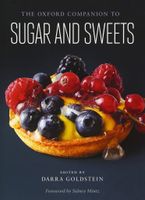Advertisement
Sugar, Sweet Substitutes, and Health
Published 2015
In the late nineteenth century, Constantin Fahlberg, a chemist at Johns Hopkins University, accidentally discovered the first chemical replacement for sugar: saccharin. See artificial sweeteners. Its use was widespread in Europe during World War I due to sugar rationing, and it remained a popular sugar substitute in the interwar period. However, in the United States, saccharin’s use was limited to diabetics until after World War II. By the late 1960s, bench chemists had discovered the sugar substitutes cyclamate, acesulfame K, and aspartame, but until 1982—when aspartame was approved for wider use in Europe and the Americas—only saccharin was government-approved as a sugar replacement. Chemical companies and food and beverage manufacturers promoted calorie-free sweeteners as healthier alternatives to sugar. Public demand for these replacements was so high that the threat of a saccharin ban by the U.S. Food and Drug Administration in 1977—spurred by a study linking cancer and saccharin consumption—caused one million consumers to protest.


